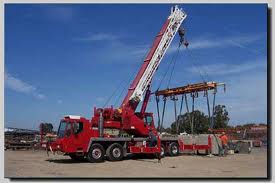Small employers and owner/operators of cranes are at a distinct disadvantage when it comes to complying with OSHA’s new Cranes and Derricks in Construction rule. To a degree, it’s simply a manpower issue—these individuals have to wear many hats besides crane owner and operator, including salesperson, accountant, and safety director.
They may lack the time and resources to quickly understand the complexities of the regulation. Yet the services they offer are vital to the regions and niche markets they serve. These are crane owners with fleets as small as one machine doing HVAC placement, lifting furniture, setting trees for landscaping, and other odd jobs. Many of them own boom trucks and small truck or AT cranes. Many have safe records as crane providers. So I was sad to learn that one of these owner/operators has decided to leave the business, in part because he’s not sure he’ll be protected under the new rule when working with unqualified riggers and/or signalpersons employed by the customer for whom he’s hired to do a job. (See page 12.)
Perhaps the greater tragedy is that the people who come in contact with cranes but aren’t crane professionals, could be at greater risk. Chuck Mostert, former owner of Mostert Cranes, Prescott Valley, Pa., says of his customers: “The only reason the subject [of qualifed signalpersons and riggers] has even been broached is because I brought it up.” It’s not surprising that users of cranes who are not crane professionals would be unfamiliar with safety requirements. Often it’s left to the crane providers to educate the customer, even if it’s not their responsibility under the law.
Yet, that’s exactly the question Chuck Mostert asks. While he knows he has a moral obligation, does he also have a legal one? He goes on to say: “Often, their jobs seem to get accomplished safely in spite of their own worst efforts, whether a crane is onsite or not.” Another guest columnist—Judy Agnew, senior vice president of safety solutions at Aubrey Daniels International—would say these companies are “safe by accident.” (See March 2011, page 14.) While a compliance guide published by OSHA for small entities (www.osha.gov/cranes-derricks/ small_entity.html) is helpful in answering the questions raised by Chuck Mostert, it’s not conclusive. However, it repeatedly states that others have responsibilities under the rule besides the crane owner or employers who use cranes. “Other employers on construction sites where cranes and derricks are used are responsible for violations that expose their employees to hazards and, therefore, need to know the requirements of the standard that may affect their employees.” These employer duties are consistent with OSHA’s multi-employer policy, which places compliance duties on (1) employers who create or control hazards, (2) employers whose employees are exposed to hazards, and (3) employers with general supervisory authority over a worksite.
Another resource for small business owners operating cranes is OSHA’s On-site Consultation Program. Go to
http://www.osha.gov/dcsp/smallbusiness/consult.html
find an office. These agencies provide free and confidential compliance advice. And yet, it’s not just small fleet owners with questions and concerns. Last April at the Specialized Carriers & Rigging Association’s annual conference, a representative of IMPACT, the Ironworker Management Progressive Action Cooperative Trust, voiced his organization’s concerns over unaswered compliance questions. Steve Rank, IMPACT’s director of western region, proposed the SC&RA join a coalition letter being drafted for submission to OSHA on these issues. Certainly the unions and members of the SC&RA represent some of the biggest crane users and owners. For our part, Crane Hot Line will continue to post these topics on social media sites in order to open up the discussion to a broader audience. Maybe input from other crane and rigging professionals will help crane owners of all sizes make informed moral and business decisions.
Source: Tracy Bennet, Editor at Crane Hotline



